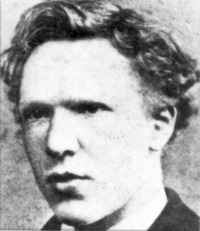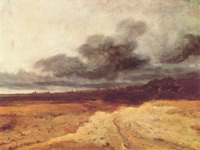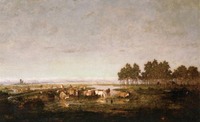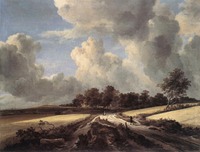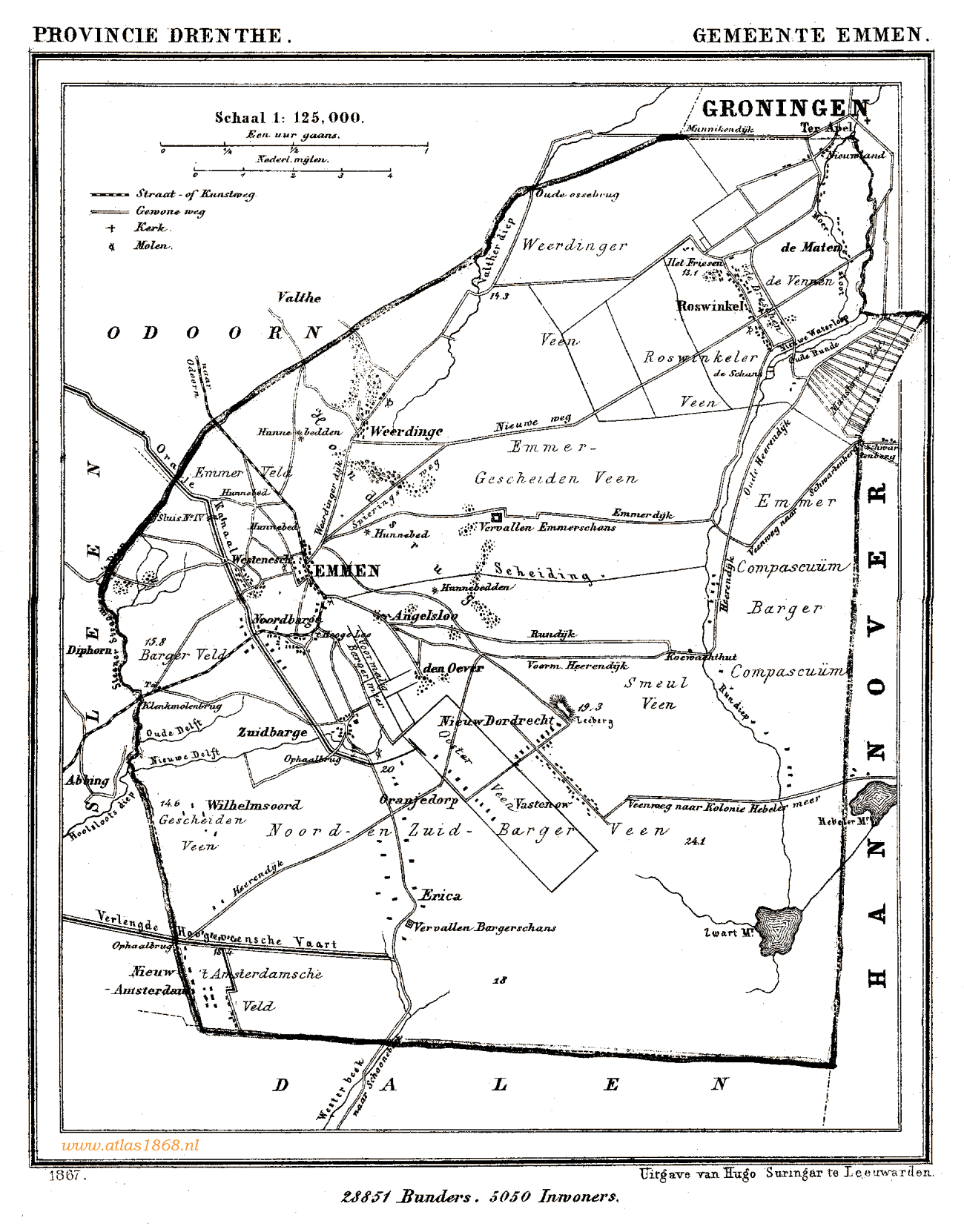map of South-East Drenthe
A week ago I visited one of the most deserted places in the Netherlands called Black Lake. It is a small village near the German border in the North Eastern part of Holland and it is my birthplace, In 1882 young Vincent van Gogh mentioned the Black Lake in one of the letters to his brother Theo. At that time the Black Lake was not a village but a real lake in the middle of a vast area of moorland. Van Gogh had romantic ideas about the place. At that time young Vincent lived in the Hague learning the art of painting from his cousin Anton Mauve, who was a well known painter. Vincent had a permanent shortage of money and his intimate relationship with a prostitute caused a severe conflict with his parents about his indecent lifestyle. His cousin Mauve took sides with the parents and stopped teaching Vincent. The headstrong Vincent did not care, he wanted to follow his own path. In 1883 he fled the Hague and left for the countryside in Drenthe. He was intrigued by the large white spot on the map and the people who worked and lived there in difficult circumstances. The white spot was a vast almost unhabitated area of moorland. During centuries it formed a natural border with the German empire but in the second half of the 19th century Amsterdam merchants started to exploit the enormous peat resources. The area became the "Wild West" of the Netherlands and attracted many entrepreneurs, labourers and fortune seekers. Among them young Vincent van Gogh but also my ancestors.
In september 1883 van Gogh ( 30 years old) travelled together with many labourers by barge deep into the moorland near the German border. He describes the journey in a letter to his brother Theo. He was lyrical about the landscape of vast plains of moorland and compared it with a row of connected landscapes painted by the French painters Georges Michel, Theodore Rousseau and the Dutch painter Philip de Koninck. Later during his stay he also made comparisons with Jacob van Ruisdael (see left)
I understand the exhiliaration of van Gogh. Even today with most of the moorland cultivated, the vastness of the area and the wide horizon with towering clouds is still impressive.
